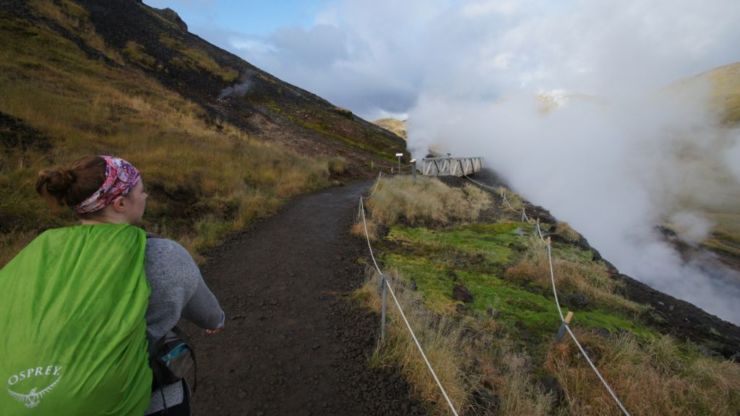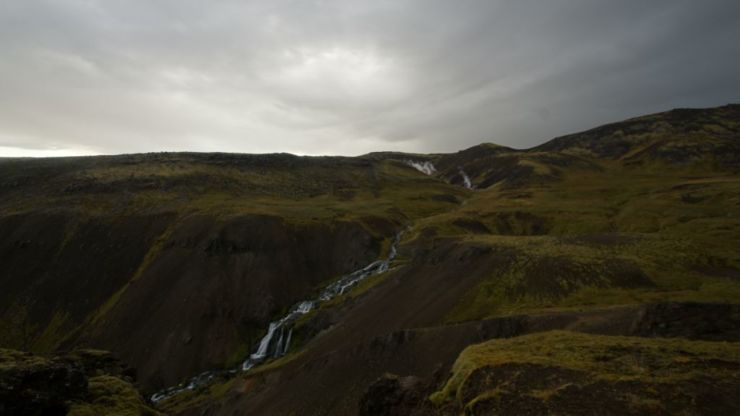Staying warm and well fed

The night before we had struggled with the stove. It would light up okay, but didn't seem to evince a rolling boil from our pot of water, and we ended up with lukewarm crunchy soup for the evening meal. Likewise, the water for our coffee in the morning never really got up to temperature. We contacted the rental company, and they replied back that perhaps the fuel was low. I could hear fuel sloshing around in the bottle, so that seemed odd to me.

We headed back toward Reykjavik intending to visit the Costco to purchase some supplies, including now a proper blanket to stay warm. We also wanted to purchase more butane to see if it really was an issue of being low on fuel.
After a bit of reasearch though, I found that the isobutane used in the stove was a combination of Propane and Butane, and that if it wasn't sufficiently warm, the propane would burn off first, leaving the butane in the bottom of the canister sloshing around. The solution was to somehow warm the canisters in use, either with body heat or running it under hot water provided at most campsites.
We found a couple bottles of butane at the Bonus when we arrived back in the city. We also stopped into the Ikea there, which had a fluffy down blanket rated with two red dots, their warmest rating. We bought the largest size, enough to cover the tent floor edge to edge with more to spare.
Stopping for lunch
We decided to test the stove with new butane bottles by stopping for lunch just outside the city. We drove out to Rauðhólar, which has some pseudocraters formed by lava flowing over swampland and exploding.
We set the pot to boil, and filmed some of the surroundings.
There is quite a jump between the built up parts of the city and their two and three lane roads, then the immediate rural roads to the south, one lane each way. They're well kept, and fairly new roads all along the ring road around the island, but you can see it was designed for smaller amounts of traffic, being mostly just the single lane, and often reducing down a single lane for both directions of traffic on bridges - one side or the other has to wait if you come to oncoming traffic.
Hot Springs

We mixed in with a steady flow of hikers up the mountain, watching a column of steam rising in the distance.
We eventually arrived at, then passed through the column of steam and found the changing areas, pairs of dividing walls, next to the river itself, somewhere between ankle and knee deep in most areas, with the capacity and heat for 50 or so bathers to lay in the stream.

We stayed for nearly an hour near where the hot spring water meets a cooler stream, where the river becomes only hot but not boiling. On the way back I stop to take a few pictures of the falls we passed on the way in.

Camping in Hella
With shopping in the morning then our river spa in the afternoon, it was getting late. We drove a bit past Selfoss, getting us off the Golden Circle route for the first time, and into the town of Hella, where there was a campground called Arhus, down by the Ytri-Ranga river. There was space for fifty or so campers, but this late in the season there were only 10 or so actually camping here this evening.
We set up camp and made our first batch of soup that was actually fully cooked, and settled in to try our new warmer Ikea blanket.